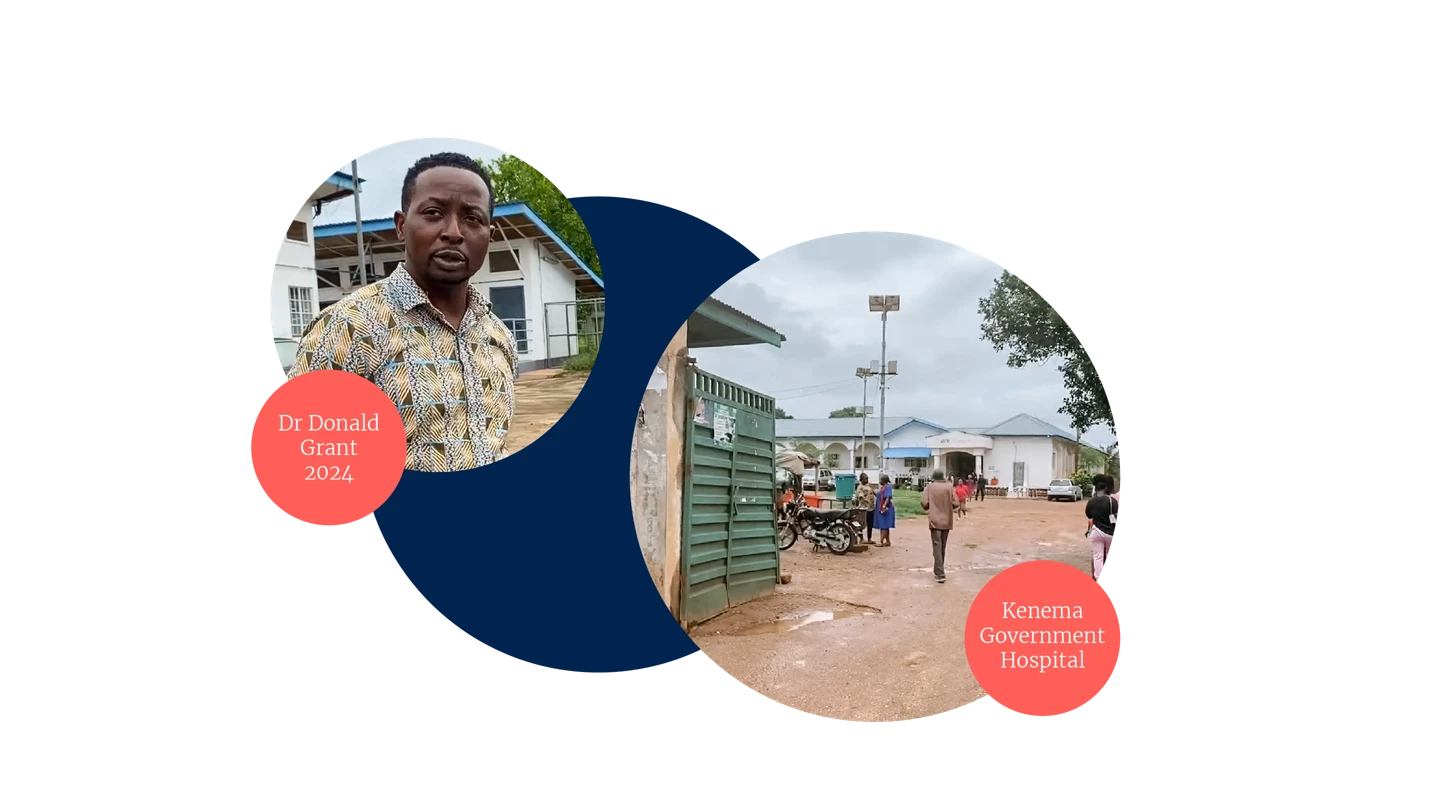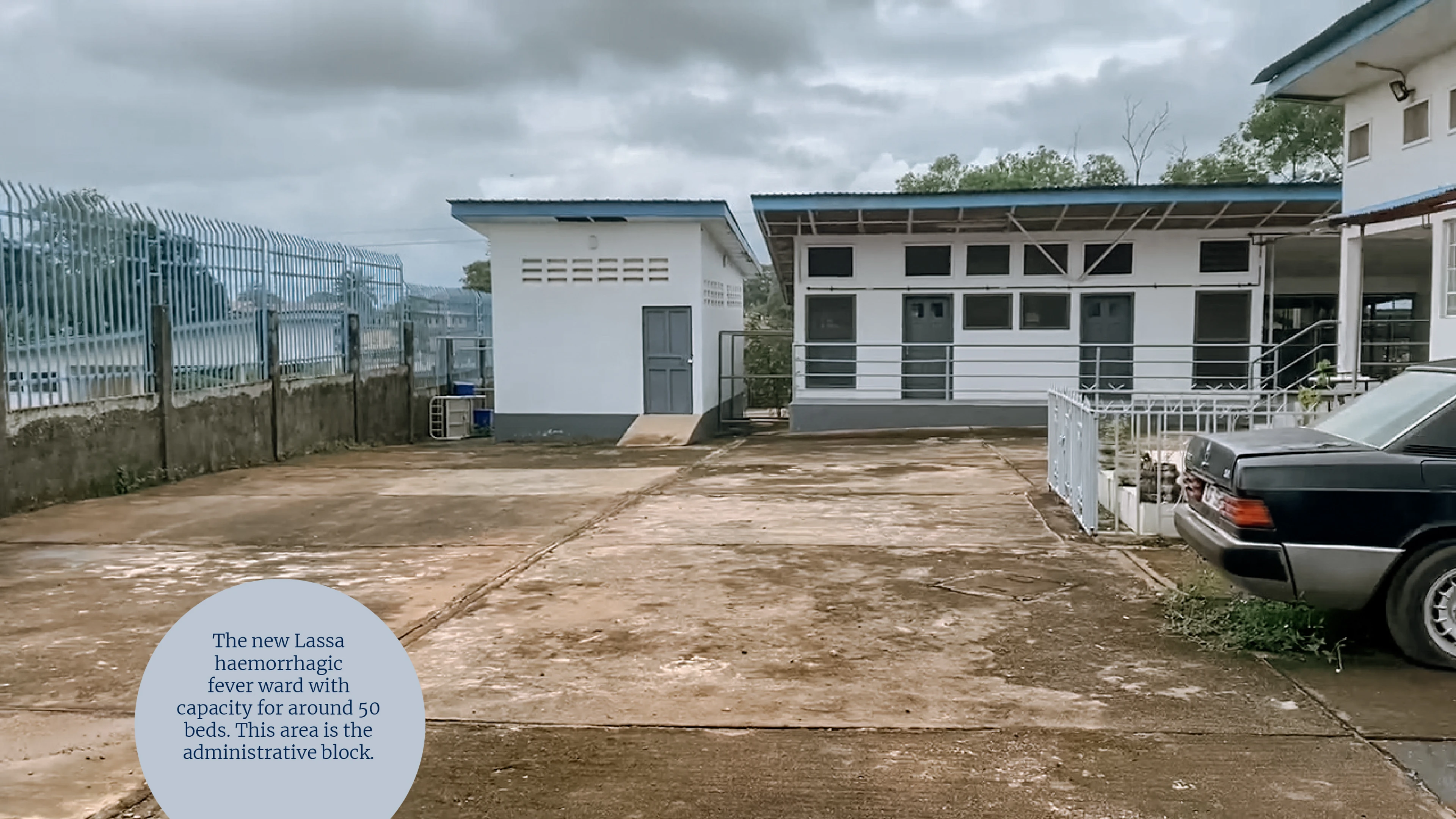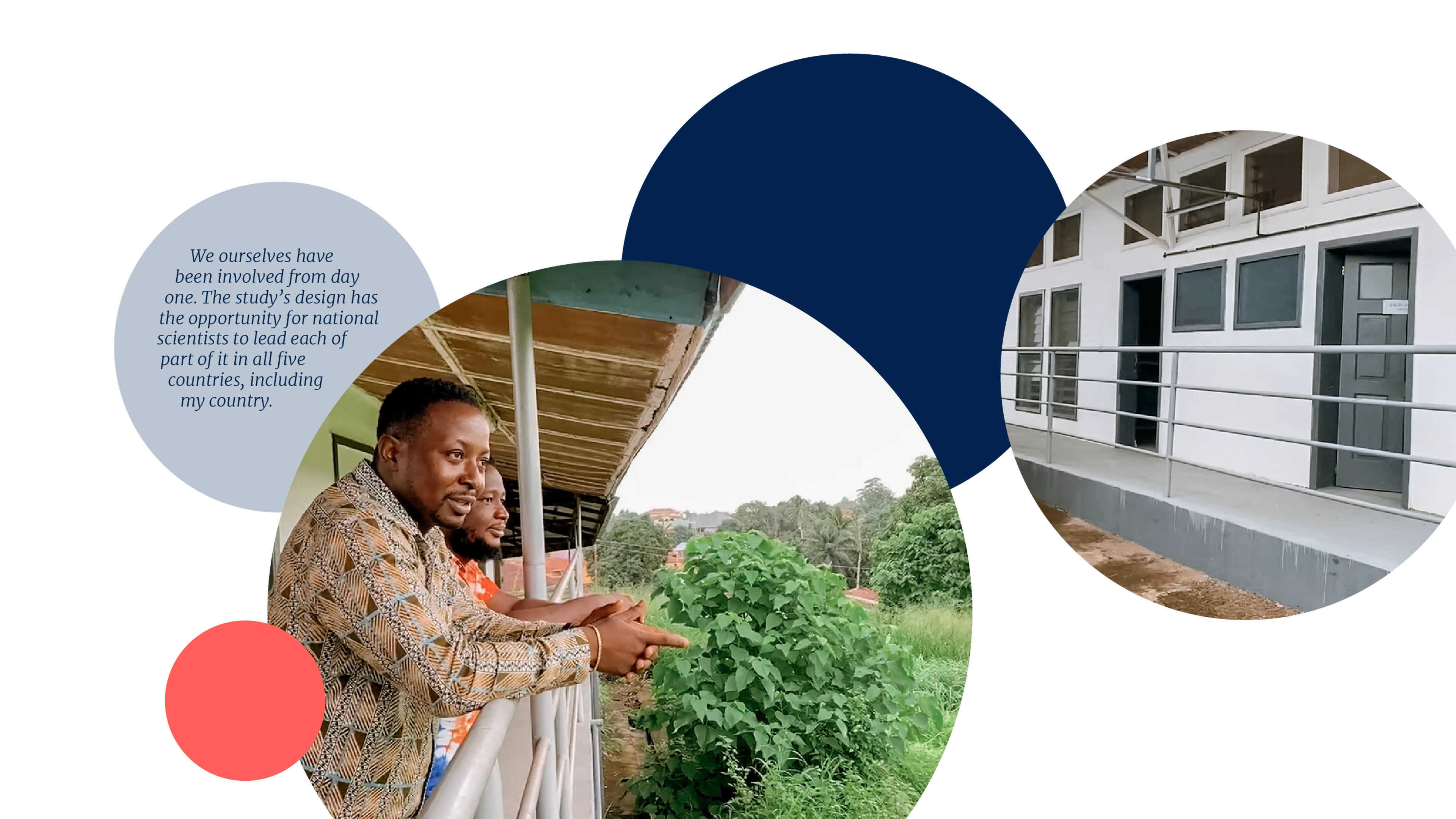From the pain of Ebola to the passion to fight Lassa
The untimely death of Dr Sheik Humarr Khan, a selfless doctor and virology expert who worked on the frontlines of the devastating Ebola epidemic that swept through Sierra Leone in 2014, was a tragic loss for many people.
For Donald Grant - then an ambitious young scientist, curious about infectious diseases, who had been inspired by Khan - the doctor’s passing hit particularly hard. “He was my mentor. I learned so much from him,” Grant remembers with sadness.
Khan’s death from Ebola left a gaping hole at the head of a nationally and regionally critical scientific research programme at Sierra Leone’s Kenema Government Hospital – a research programme working on Lassa fever.
Devastated by the loss, yet determined that Khan’s Lassa work should not go unfinished, Grant took the decision to step into his mentor’s shoes and rebuild the district’s Lassa research team from scratch.
“I had to take over. And it was really tough. People would ask me: ‘Are you sure you’re going to be able to continue this programme?’.”
Almost a decade on, Dr Grant says he now has many new colleagues who work “with the passion and zeal of nationals taking the lead” in scientific research.
“We are more driven and more resilient,” he said as he met with CEPI at a health conference in neighbouring Nigeria, where Lassa outbreaks are also becoming greater and more frequent health threats. He went on to explain how the work he is now doing in Sierra Leone is changing the scientific landscape locally, nationally, and in the wider West African region.
(CEPI’s interview with Dr Grant has been edited for brevity and clarity)
Could you start off by telling us about yourself and your work?
My name is Donald Grant, medical doctor, and I am currently in charge of the Lassa fever programme in the Sierra Leone Ministry of Health. I serve as the principal investigator of the ENABLE study into Lassa fever, supported by CEPI. My team and I work at the Kenema Government Hospital, in Kenema district in the eastern part of Sierra Leone.

What is the project you’re working on with CEPI?
The project we're working on is called the ENABLE study. It's one of the largest ever epidemiological studies looking at understanding Lassa fever better. And we are just one of the countries involved, because ENABLE is a multi-national study that involves four other African countries as well as Sierra Leone.
The study basically looks at two specific groups in Sierra Leone: One part is following people over a period to see where they will come down with Lassa fever disease; and the second part is following another group that we call the infection cohort, who are people that we follow when they become infected but do not come down with the disease.
Our plan is to recruit up to a total of 5,000 participants for the study and to follow them over a period of two years so that we can deepen our understanding of the disease and the Lassa virus that causes it. This means that our Kenema Hospital site is now involved in the largest epidemiological studies it has ever been part of, and that’s adding vital research capacity for us. Because of the large number of participants, we have had to extend our research to all districts of Sierra Leone, and that’s really important because it means we are now looking at Lassa from many different angles and right up to a national level.

Is your research already helping you and your colleagues to know more about Lassa?
Obviously, our study is still ongoing and has not produced final results yet, but yes, we are already learning a lot. For example, we are finding that in some areas where we would not necessarily expect it, we’re getting lots of participants testing positive for IgGs – (or Immunoglobulin Gs - a common type of antibody found in the blood after infection). This shows that they have been infected, but they also tell us that they're not even aware that they were sick, which is a pointer to them having been asymptomatic. This suggests that a lot of people who are infected are not aware of it, and those asymptomatic cases open up questions for us to better understand things like whether they are infectious when they are asymptomatic, and also whether, despite being asymptomatic, they might have longer-term complications similar to those with full-blown disease.
Why is it important that CEPI is involved in this study? What does CEPI bring to it that another funder might not?
One of the most important things about this study is that it’s not one of those projects that is designed elsewhere and then just given to us to implement. We ourselves have been involved from day one. The study’s design has the opportunity for national scientists to lead each of part of it in all five countries, including my country.
Lassa is a disease that is predominantly seen in West Africa, so having Africans taking the lead makes it very engaging for us. It helps us to push ourselves forward in our work – because we feel the weight of the Lassa problem, we know the burden of the disease, and we understand the socio-economic impact.
So yes, we get data and knowledge, but most importantly with this kind of project - where CEPI has enabled the design and structure to be led by nationals - we also get the chance to build and expand scientific infrastructure and human resource capacity too.
When you do get full and final results from this multi-country study, what do you think the impact will be of those outcomes? What difference will the knowledge make?
It will make so much impact! Because it’s not just a study for CEPI to be able to learn from, it’s also a study that informs us nationally. It informs the Ministry of Health, for example, on how to understand how important this disease is becoming in our country, so that in terms of planning, there is good national surveillance data there to drive future planning. Then also, it has a wider impact too, because it can be combined with the work from other ENABLE countries and we'll be able to know, for example, what's the major impact of Lassa fever in Ghana. So it has a huge national and regional impact.
The other critical thing that I will never stop talking about is the capacity impact – the wins in terms of scientific research and expertise. With ENABLE, we’ve been involved in doing all of this testing, we’ve had many outreach guys out there collecting samples and conducting follow-ups – and it all helps to build close proximity with the community , because they were involved in lots of follow ups. And that brings continual engagement with the community. It means that people are starting to understand what Lassa is, the disease itself, and what the research is all about. So those are major positive impacts in terms of disease awareness and community engagement.
And what about beyond Lassa virus itself? Is this research going to be helpful in terms of investigating other viruses or health threats?
It's going to be very important. Our ENABLE research has laid a clear platform of structures and systems to have in place for other studies. The structures that we had in place now to do such a big observational study for Lassa - those structures, those lessons, those skills we have gained - will be easily translated for doing further studies into any other pathogen or health issue; observational studies and clinical trials.
Have you had major challenges while you've been conducting this work? And if so, how have you overcome them?
I think one of the major challenges was at the start. I mean, this is one of the largest studies we've ever done – with 5,000 participants – and we didn’t have the staff strength at the beginning. We realised that with the many follow ups, we had to get new people recruited. What did that mean? It meant we needed to try to bring new people into the team to work on a disease that not everyone wants to be part of, because after all it’s a viral haemorrhagic fever. So that was a little challenging.
Administratively, also, we had a few challenges, but I'm very pleased that CEPI was with us, to support us throughout the process, to ensure that we had all the administration in place. Because CEPI recognised this was a project that was more than just research, but was also one that was geared towards building capacity. So our challenges ended up being like a stepping stone, a turning point, a learning event, and we gained so much knowledge on what to do when these things arise, how to handle it, and what do we need to put in place good research structures and systems.
Looking back, I don’t see those challenges as things that pulled us down. They actually served as building blocks for us to gain strength and be more robust in what we're doing.

